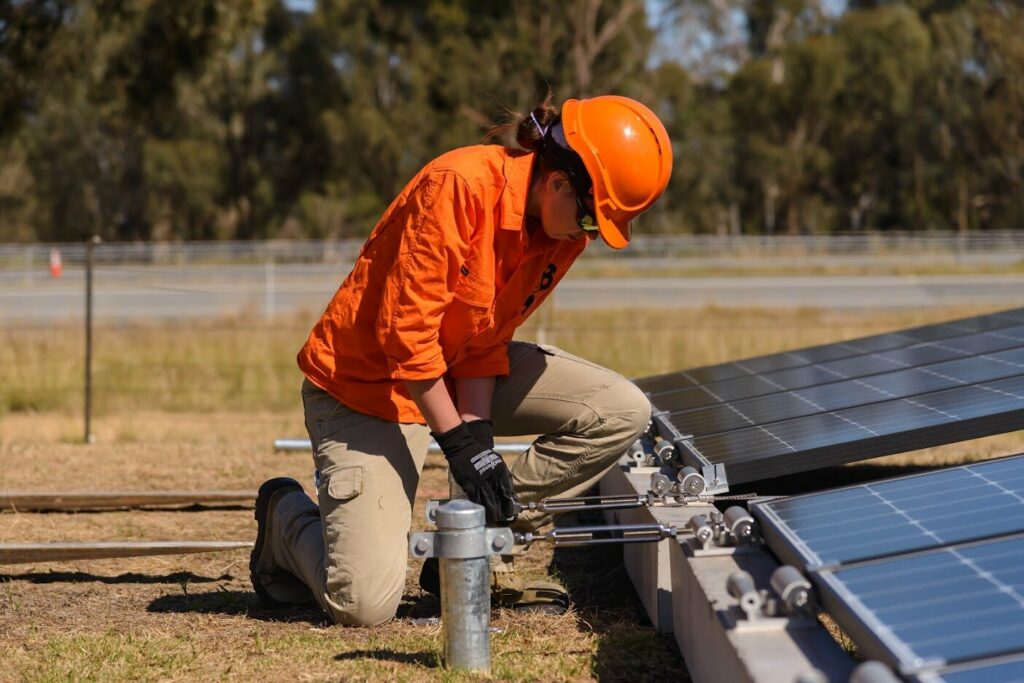The West Australian State government have fully unveiled their renewable- and battery-led Distributed Energy Resources roadmap this month after almost a year of build-up. The announcement includes a comprehensive report on the changes that WA’s grid is going through and how the government plans to respond.
Central to the plan and the report are electric vehicles. Together with rooftop solar and home batteries, they’re among the most important things to consider for the future of West Australia’s power network.
Electricity demand and the duck curve
Australians know we’re among the most sun-drenched countries on Earth, and WA is the sunniest state. That has led West Australians to adopt rooftop solar in huge numbers over the last decade and caused a massive shift in the electricity demand curve statewide.

The so-called ‘duck curve’ reflects the average electricity demand across a day/night cycle in WA. As more residents and businesses install solar, their electricity needs decrease and the overall demand plummets during daylight hours — the back of the duck.
This is a great thing for emissions, but it’s causing some real problems for Western Power and AEMO (the Australian Energy Market Operator). Without intervention, the entire South West Interconnected System (the grid containing Perth, the Wheatbelt, Kalgoorlie and the South West region) is expected to become unstable by 2022 with cascading generator failures and blackouts.
And solar is only one of the distributed energy resources (DERs) that WA has to account for.
Distributed Energy Resources
DERs are defined as anything that can “use, generate, or store electricity, and form part of the local distribution system, serving homes and businesses”. Specifically, that means solar, EVs, and home batteries.
Behind-the-meter (i.e., home) battery systems are slated to rise by 24.9% annually in WA this decade. Together with the onset of vehicle-to-grid (V2G) technology in EVs, these have the potential to lower demand further and increase two-way traffic on a grid that isn’t designed for it.
Comprehensive upgrades and a revision of the state electricity tariff will be part of the changes to take place in the next five years. Once complete, the ‘roadmap’ solution will fully account for all types of DERs in the WA electrical grid, including EVs.

“[WA will] continue to provide customers with the choice to use rooftop solar PV to reduce their bills, while also incentivising DER investments that have increased benefit to the system, such as battery storage.”
The future of electric mobility in WA
As of last year, there were less than 1000 EVs registered in WA. The DER Roadmap report cites “price, lack of charging infrastructure, limited incentives to encourage take up and a minimal number of vehicle models currently available” as factors contributing to that low number.
Thankfully, there are plans to improve that figure. The State Government have established an EV Working Group to design and enact plans to “increase the number of electric vehicles in the State Government fleet, electric vehicle infrastructure, and standards and incentives to encourage uptake.”
Following these programs and likely advances in EV tech and affordability, WA’s government is expecting anywhere between 44,000 and 128,000 EVs to be registered in the state by 2029.
The WA State Government acknowledges that the effect of EVs changing capabilities are hard to predict, stating in the report, “the implications of emerging vehicle-to-grid capabilities in the SWIS are not yet understood.”
“EV charging will likely contribute additional demand, and the timing of this load can either exacerbate evening peak demand or provide system benefits by absorbing daytime rooftop solar generation. Implementing appropriate price signals to encourage EV charging at beneficial times is essential.”
So it looks like variable electricity pricing is on the cards, potentially incentivising electricity use during daylight hours rather than at night. This would be a shift from WA’s current system, which doesn’t vary rates based on time of day.
Check out the full report here.

